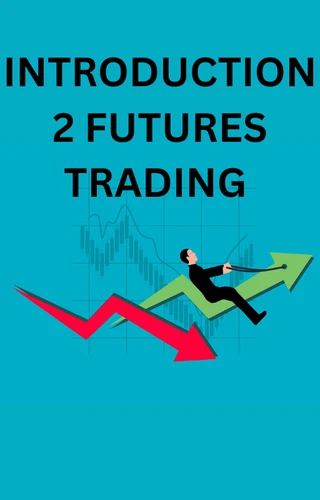Introduction 2 Futures Trading
Par :Formats :
Disponible dans votre compte client Decitre ou Furet du Nord dès validation de votre commande. Le format ePub est :
- Compatible avec une lecture sur My Vivlio (smartphone, tablette, ordinateur)
- Compatible avec une lecture sur liseuses Vivlio
- Pour les liseuses autres que Vivlio, vous devez utiliser le logiciel Adobe Digital Edition. Non compatible avec la lecture sur les liseuses Kindle, Remarkable et Sony
 , qui est-ce ?
, qui est-ce ?Notre partenaire de plateforme de lecture numérique où vous retrouverez l'ensemble de vos ebooks gratuitement
Pour en savoir plus sur nos ebooks, consultez notre aide en ligne ici
- FormatePub
- ISBN8201213534
- EAN9798201213534
- Date de parution05/01/2023
- Protection num.pas de protection
- Infos supplémentairesepub
- ÉditeurJL
Résumé
Futures contracts are used for a variety of purposes, including hedging against price fluctuations, speculating on the direction of prices, and arbitrage (taking advantage of price differences in different markets). They are used in a wide range of markets, including commodities (e.g. oil, wheat), currencies, and financial instruments (e.g. interest rates, stock indices). In a futures contract, one party (the "buyer") agrees to purchase the underlying asset at a future date, and the other party (the "seller") agrees to deliver the asset at that time.
The buyer pays a small portion of the total purchase price upfront (called the "initial margin") and agrees to pay the remainder (the "settlement price") on the delivery date. The initial margin is typically a fraction of the settlement price and is used to cover the buyer's potential losses if the market moves against them.
The buyer pays a small portion of the total purchase price upfront (called the "initial margin") and agrees to pay the remainder (the "settlement price") on the delivery date. The initial margin is typically a fraction of the settlement price and is used to cover the buyer's potential losses if the market moves against them.
Futures contracts are used for a variety of purposes, including hedging against price fluctuations, speculating on the direction of prices, and arbitrage (taking advantage of price differences in different markets). They are used in a wide range of markets, including commodities (e.g. oil, wheat), currencies, and financial instruments (e.g. interest rates, stock indices). In a futures contract, one party (the "buyer") agrees to purchase the underlying asset at a future date, and the other party (the "seller") agrees to deliver the asset at that time.
The buyer pays a small portion of the total purchase price upfront (called the "initial margin") and agrees to pay the remainder (the "settlement price") on the delivery date. The initial margin is typically a fraction of the settlement price and is used to cover the buyer's potential losses if the market moves against them.
The buyer pays a small portion of the total purchase price upfront (called the "initial margin") and agrees to pay the remainder (the "settlement price") on the delivery date. The initial margin is typically a fraction of the settlement price and is used to cover the buyer's potential losses if the market moves against them.






















